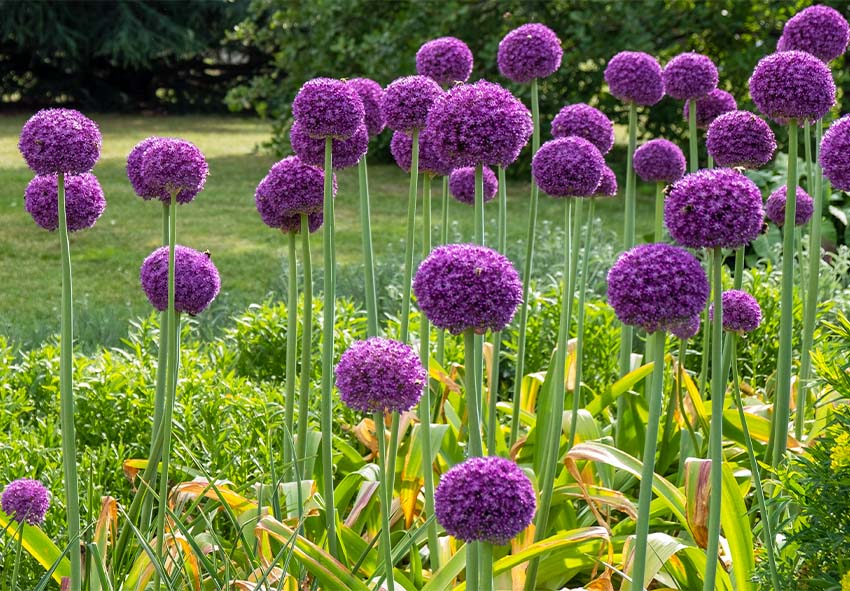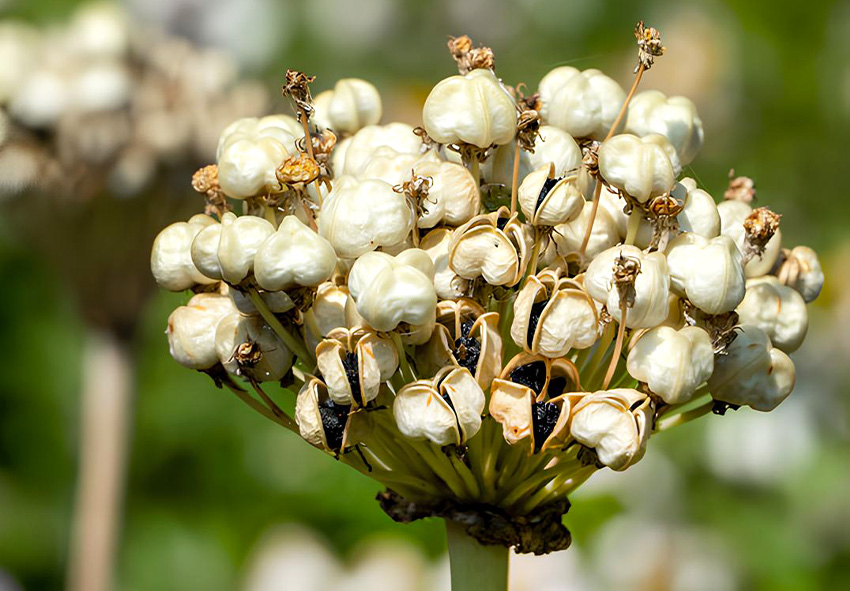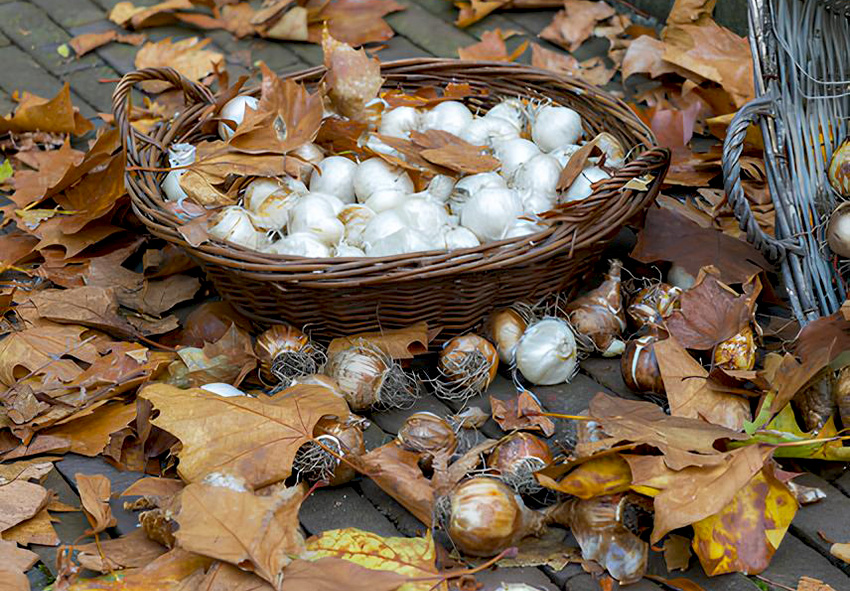Alliums, also known as ornamental onions, are among the most striking flowering bulbs for spring and summer gardens. Their globe-shaped blooms, ranging from rich purples to bright whites, bring height, color, and architectural interest to beds and borders. If you love alliums, learning how to propagate alliums is a rewarding way to expand your garden without constantly buying new bulbs. Our gardening blog is a perfect place to find any information you need!
Why Propagate Alliums?

Propagation is the key to enjoying more of these spectacular flowers year after year. By propagating allium bulbs, you can quickly increase your plant numbers at little to no cost. It also allows you to preserve your favorite varieties and ensure that your garden is full of reliable, beautiful blooms every spring.
Extend the beauty of your garden
Alliums create a bold statement, but a single clump can only cover so much space. Propagation lets you spread the beauty across borders, pathways, or meadows. More plants mean more color, structure, and pollinator-friendly flowers in your outdoor space.
Cost-effective way to increase plants
Buying allium bulbs each year can be expensive, especially if you’re planting in large drifts. By multiplying your existing bulbs, you can create more impact for free. This makes propagation one of the most budget-friendly gardening practices.
Preserve favorite allium varieties
Not all alliums are easy to find in garden centers every season. Propagation ensures you keep your favorites thriving year after year. It also allows you to share divisions and offsets with friends or neighbors who admire your garden.
Different Methods of Propagating Alliums
There are several ways to multiply your allium plants. The two most common are using bulb offsets allium produces naturally, or through allium seed propagation. Understanding each method helps you decide which approach works best for your garden goals:
Propagation from bulb offsets
Most alliums produce small bulbs, called offsets, around the base of the main bulb. These can be gently separated and replanted to grow into mature plants. This is the fastest and easiest way to propagate alliums.
Dividing established clumps
Over time, older alliums form dense clumps that may need thinning. By dividing allium plants, you not only prevent overcrowding but also create several new bulbs to plant elsewhere. This method keeps your plants healthy while multiplying their numbers.
Growing alliums from seed
While slower, growing alliums from seed is another option. Seeds can be collected from spent flower heads and sown either in pots or directly in the ground. Though it may take 2–3 years for seedlings to flower, this method is ideal for patient gardeners.
Step-by-Step Guide: How to Propagate Alliums from Seed

If you’re curious about allium seed propagation, it’s a slower process but one that brings great satisfaction. Seeds allow you to produce many plants at once and sometimes result in exciting variations. Patience is key, as it can take years for seeds to mature into flowering bulbs.
Collecting and storing seeds
Wait until the flower heads dry out, then harvest the black seeds. Store them in a cool, dry place until ready to sow. Fresh seeds often have better germination rates.
Sowing seeds indoors or outdoors
Seeds can be sown in pots filled with well-draining compost or directly outdoors in prepared soil. Keep them lightly covered and moist. For best results, sow them in autumn so they benefit from natural cold stratification.
Germination timeline and patience required
Germination can be slow, sometimes taking months. Seedlings may need two to three years before they produce their first flowers. However, this method is perfect for gardeners who enjoy the challenge and reward of raising plants from seed.
Step-by-Step Guide: How to Propagate Alliums from Bulbs
When learning how to propagate alliums using bulbs, it’s important to start with healthy material and follow proper planting techniques. This ensures your offsets develop into strong, flowering plants. Here’s a simple step-by-step guide:
- Choosing healthy bulbs: Select mature bulbs that are firm, plump, and disease-free. Avoid bulbs that are soft, moldy, or damaged. Healthy bulbs give you the best chance of success.
- Separating bulb offsets carefully: Gently lift the clump from the soil with a garden fork, being careful not to damage roots. Separate the small offsets from the mother bulb, keeping as much of the basal plate intact as possible. Handle gently to avoid bruising.
- Replanting in the right soil and depth: Replant both the main bulb and its offsets at a depth of about three times their height. Choose well-drained soil in a sunny location for best growth. Water after planting to help the bulbs settle.
Caring for Young Alliums After Propagation
Once you’ve propagated your alliums, proper care will help them establish and thrive. Young bulbs and seedlings need slightly more attention than established plants. With the right conditions, they will quickly settle in and provide years of blooms.
Soil, watering, and fertilizing needs
Alliums prefer sandy, well-drained soil enriched with organic matter. Water lightly but regularly during growth, avoiding waterlogged conditions. A low-nitrogen fertilizer in spring can encourage stronger blooms.
Protecting young plants from pests
While alliums are generally pest-resistant, slugs may sometimes attack young shoots. Use natural deterrents such as crushed eggshells or organic slug pellets. Keep an eye out for fungal diseases, which can be avoided with proper spacing.
When to expect first blooms
Bulb-propagated alliums usually flower within 1–2 seasons. Seed-propagated plants, however, may take 2–3 years. Once established, they will return and multiply naturally each year.
Common Mistakes to Avoid When Propagating Alliums

Even though alliums are easy to propagate, a few mistakes can limit success. Avoiding these pitfalls ensures your efforts pay off with strong, healthy blooms. Here are the most common errors to watch out for:
- Overcrowding bulbs or seedlings: Planting allium bulbs or seeds too close together restricts airflow and nutrient access. Always give each plant enough space to grow. Proper spacing prevents disease and encourages larger flowers.
- Planting in poorly drained soil: Alliums dislike sitting in water, which can cause bulb rot. Make sure the soil drains well, or improve it with sand and compost. Raised beds or pots can also be excellent alternatives.
- Impatience with seed-grown varieties: Gardeners often give up on allium seed propagation too early. Remember that seed-grown alliums take time before flowering. With patience, they reward you with unique and beautiful plants.
Conclusion
Learning how to propagate alliums is a simple and rewarding process that allows you to enjoy more of these striking flowers in your garden. Whether you choose bulb offsets for quick results or seeds for a long-term project, propagation ensures your alliums continue to thrive. With proper care, these ornamental onions will light up your garden for years to come!
Frequently Asked Questions (FAQs) about Allium Propagation
1. What is the easiest way to propagate alliums?
The easiest way to propagate alliums is by using bulb offsets. Mature allium bulbs naturally produce small baby bulbs at their base. These offsets can be carefully separated and replanted in well-drained soil. This method is quicker than growing from seed and usually results in flowering plants within 1–2 seasons.
2. Can I grow alliums from seeds?
Yes, you can grow alliums from seeds, but the process takes patience. Seeds should be collected from mature flower heads and sown either in autumn or spring. Seed-grown alliums often take 2–3 years before they bloom, making this method slower than bulb propagation, but rewarding for gardeners who enjoy starting plants from scratch.
3. When is the best time to divide allium plants?
The best time to divide allium plants is in late summer or early autumn, once the foliage has yellowed and died back. This ensures the bulbs have stored enough energy for the next season. Carefully dig up the clumps, separate the offsets, and replant them at the correct depth in well-drained soil.
4. How long does it take for propagated alliums to flower?
The flowering time depends on the propagation method. Bulb offsets and divided clumps typically produce flowers within 1–2 seasons. Seed-grown alliums, however, may take 2–3 years before their first blooms. With proper care, all propagated plants will establish well and continue to return each year with striking globe-shaped flowers.
5. Can I order Allium bulbs from your online store?
Yes, you can! Our online store Dutch-bulbs.com offers a wide selection of Allium plants, including different varieties and colors. We take pride in providing top-quality plants that are carefully cultivated and shipped with care to ensure they reach you in perfect condition. Our plants can be a wonderful addition to your home or garden.
Published: 30.09.2025
